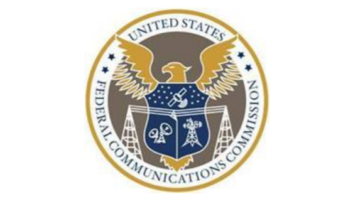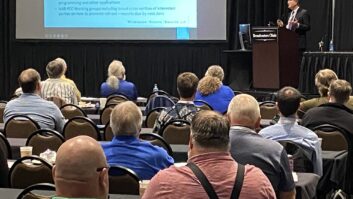Do you remember the Processing War debates between the big audio processing companies a number of years back? The discussions could get quite heated, but the points discussed were useful among engineers — if not downright entertaining.
If you enjoy a good debate, consider coming to the Wisconsin Broadcaster’s Clinic, Oct. 16–18 in Madison.
On Wednesday evening, Oct. 17, the local Society of Broadcast Engineers chapter will meet at 5 p.m. for dinner. Following the dinner, Nautel’s Jeff Welton and Rohde & Schwarz’ Don Backus will debate the benefits and drawbacks of air-cooled versus liquid-cooled transmitters. The discussion should be lively, as well as informative!
Don provided some good content in our July 25 Workbench column, archived at www.radioworld.com. This will be an opportunity to hear both sides from these industry leaders, as well as audience interaction.
Wisconsin Association of Broadcasters Vice President Linda Baun offers free registration for the SBE dinner/debate, but you must pre-register at www.wi-broadcasters.org. You do not need to be a member of SBE or of the Wisconsin Broadcasters Association to attend, just be sure to register so Linda has a head count for dinner.
If you’re within driving distance of Madison, the three-day Wisconsin Broadcasters Clinic is worthy of your consideration. In addition to practical top-notch engineering sessions, equipment exhibitors will have products on display. If you sign up, tell Linda you heard about the event through Workbench!
***
RC Woolfenden is the operations director for Newcomb Broadcasting’s WFAX(AM/FM) in the Washington, D.C., area. RC commented on the AC cord problem covering up the ground fault interrupter outlet trip/reset buttons.
RC has used a short AC cord extension such as the one offered by QVS. Enter “QVS-PP-ADPT” in the Amazon search block for information. QVS offers single, dual and triple outlet extension cords.
RC adds these are great for keeping the “wall warts” from taking up too much space on power strips, UPS units, etc. He always keeps a couple around.
***
At the recent Ennes Workshop in Lincoln, Neb., we had a discussion about infrared cameras.

Jeff Welton of Nautel showed me his FLIR One Pro LT, seen in Fig. 1. This infrared camera plugs into a smartphone and provides thermal imaging (shown in Fig. 2).

Fig. 2 features an electric breaker box with an over-heated circuit breaker. During transmitter site inspections, as a courtesy to his customers, Jeff takes the temperature of circuit breaker and disconnect panels. Jeff told me he hasn’t been to a site yet where his camera hasn’t disclosed some kind of anomaly.
This model costs about $300; consider it insurance for your station cluster. If you’re a contract engineer, here is another service you can offer and bill to stations in your region.
***
Greg Muir is a principal of Wolfram Engineering of Great Falls, Mont. Greg asks readers if they’ve had this experience:
It’s the evening or the weekend, everything is humming along on automation with no personnel to be seen anywhere in the studios. Then the custodial staff arrives to attend to their assigned duties. The new guy on the staff enters a studio to vacuum. He looks around for a source of power for his vacuum, and eyes a neat little box under a console with numerous unused outlets. How handy! He plugs his vacuum into one of the outlets, hits the switch, hears a pop! and then silence.
Now the engineer is rousted from his limited “quiet time” (we get that at times, don’t we?) with a call from the silence detect system or from the air talent who responded to the studio to find out what has happened. The engineer arrives to find the automation computer dark, the reliable UPS dead and the custodial staff members trying to avoid eye contact.
Note that, given some of the design approaches used for surge protection in UPS units on the market today, switching a motor load off can place that transient on the downstream side of the surge protection. This is because of its accompanying horrendous inductive transient.
Even if the UPS is beefy enough to withstand the motor load, a significant transient event can propagate back into all of the loads that are connected to it, possibly causing other problems.

The lesson? Child-proof your spare UPS outlets! Stop by your local hardware store and pick up a quantity of outlet safety caps intended for that purpose (Fig. 3). A dozen or so can run as cheap as $2 and they’re excellent insurance (and provide great peace of mind). Check out the “protected” UPS outlets in Fig. 4.

If you find that the safety caps do not clear some of the closer outlet spacing, as found on some UPS units, trim their edges to fit as shown in the photo.
Contribute to Workbench. You’ll qualify for SBE recertification credit. Send Workbench tips and high-resolution photos to [email protected]. Fax to (603) 472-4944.












